senkosam
Well-known member
- Joined
- Aug 5, 2019
- Messages
- 154
- Reaction score
- 63
- LOCATION
- Hudson Valley, N.Y.
Pouring your own has it's advantages:
1. softness desired based on plastisol bought
2. infinite color choices
3. never running out needing me to order, as well as the costly s/h costs, delays in shipping, etc.
4. variety of designs (molds) and sizes as well as unique designs sold nowhere or that were discontinued
5. lures cost money - some at ridiculous prices. (IE Sweet Beaver and Senko). Pouring certain designs over time is cost effective and plastics can be remelted but with some drawbacks.
6. Friends will want to buy the lures you made that catch fish. Not a big deal, but nice to know.
7. Plaster of Paris and other better materials make good copies - even full 3D with two part molds.(Uncle Josh went out of business and I made their pork frog trailer in different sizes using plaster.)
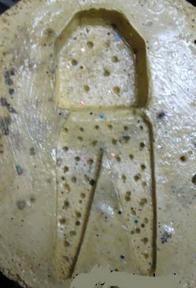
8. Many molds are available outside north America and are much cheaper. Quality is good!
9. Something to do in winter or anytime fishing is out of the question.
Drawbacks of pouring your own:
1. The more you reheat clear or translucent plastic, the darker it becomes with clear starting to yellow and then turn brown. Glitter colors start to fade and turn white with more reheats.
2. Some aluminum molds must be preheated with hot plastic or the fine details (ie thin tails) won't fill in (IE injection pour).
That's all I can think of.
Once I get tired of catching fish on a design, I need to find others - especially unique designs not sold or even thought of. So, considering the over 1000 soft plastic I've accumulated over many decades, I thought, why not take a part of one and attach it to the part of another! Hybrids lures were born! You're only limited by your or someone else's imagination (IE my).
Do all of the above catch fish? YOU BETHCHA!
To make a hybrid all you need is pair of scissors or a box cutter blade and a candle. I also use a battery powered soldering iron (rechargeable batteries) to smooth the seam where the parts are connected. Hold one end over the flame briefly (2 seconds) and then the other. Hold the ends together for 4 seconds and the bond is as strong as an untouched lure. Here are some examples:
Yamamoto Kut Tail worm attached to a grub body:

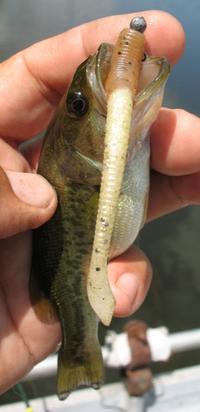
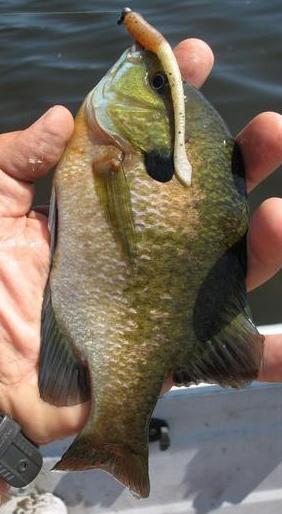
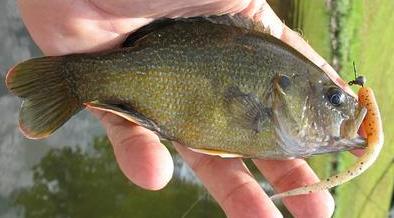

Note: lure caught different species and size fish!)
I add a stubby tail from a mold to a grub body:
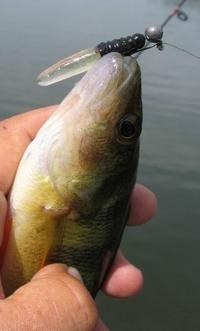



It's one of the best designs I ever came up with and far better and a curl tail or shad tail IMO ! Note the clear tail.
Connect two together and wacky rig this mini-stick !:

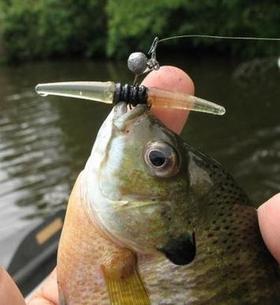
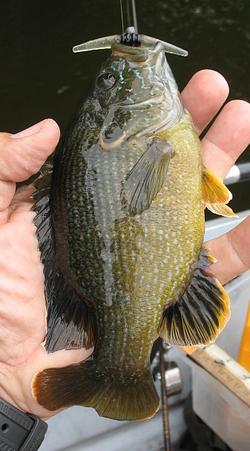
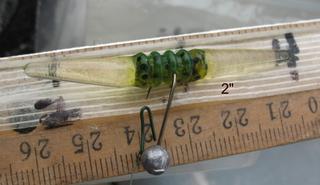


Rigged the usual way:

This is a claw from a bass lure added to a grub body:
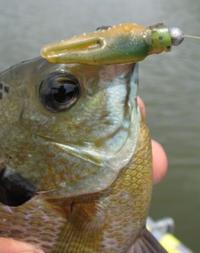
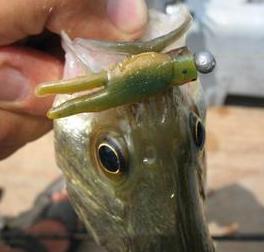

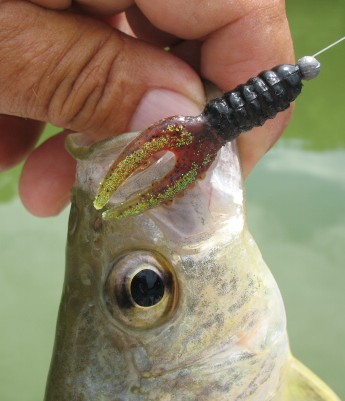
I added this Crappie Magnet split tail to a thicker grub body:

1. softness desired based on plastisol bought
2. infinite color choices
3. never running out needing me to order, as well as the costly s/h costs, delays in shipping, etc.
4. variety of designs (molds) and sizes as well as unique designs sold nowhere or that were discontinued
5. lures cost money - some at ridiculous prices. (IE Sweet Beaver and Senko). Pouring certain designs over time is cost effective and plastics can be remelted but with some drawbacks.
6. Friends will want to buy the lures you made that catch fish. Not a big deal, but nice to know.
7. Plaster of Paris and other better materials make good copies - even full 3D with two part molds.(Uncle Josh went out of business and I made their pork frog trailer in different sizes using plaster.)

8. Many molds are available outside north America and are much cheaper. Quality is good!
9. Something to do in winter or anytime fishing is out of the question.
Drawbacks of pouring your own:
1. The more you reheat clear or translucent plastic, the darker it becomes with clear starting to yellow and then turn brown. Glitter colors start to fade and turn white with more reheats.
2. Some aluminum molds must be preheated with hot plastic or the fine details (ie thin tails) won't fill in (IE injection pour).
That's all I can think of.
Once I get tired of catching fish on a design, I need to find others - especially unique designs not sold or even thought of. So, considering the over 1000 soft plastic I've accumulated over many decades, I thought, why not take a part of one and attach it to the part of another! Hybrids lures were born! You're only limited by your or someone else's imagination (IE my).
Do all of the above catch fish? YOU BETHCHA!
To make a hybrid all you need is pair of scissors or a box cutter blade and a candle. I also use a battery powered soldering iron (rechargeable batteries) to smooth the seam where the parts are connected. Hold one end over the flame briefly (2 seconds) and then the other. Hold the ends together for 4 seconds and the bond is as strong as an untouched lure. Here are some examples:
Yamamoto Kut Tail worm attached to a grub body:





Note: lure caught different species and size fish!)
I add a stubby tail from a mold to a grub body:




It's one of the best designs I ever came up with and far better and a curl tail or shad tail IMO ! Note the clear tail.
Connect two together and wacky rig this mini-stick !:






Rigged the usual way:

This is a claw from a bass lure added to a grub body:




I added this Crappie Magnet split tail to a thicker grub body:



